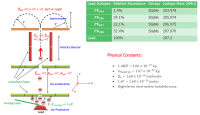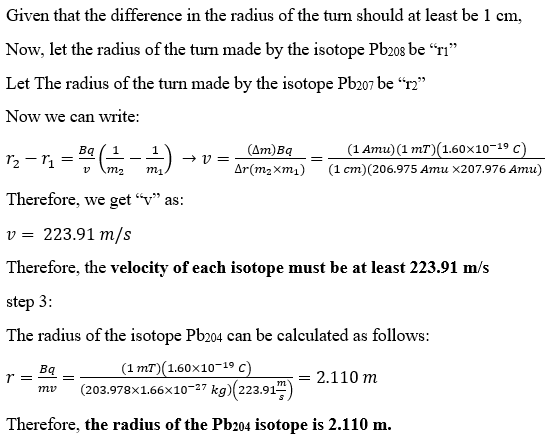definitely dissolve using vectors.Please help me


Given information:
The difference in the radius of the isotopes, that have the mass difference of 1 neutrino, should at least be 1 cm.
Let us assume the magnetic field be 0.001 T or 1 mT. Now, for the particles to tilt in the left direction the magnetic field should be out of the paper. If they are to be tilt to the right the magnetic field should be into the paper.
From the given isotopes, the isotope that have the mass difference of 1 neutrino are Pb206, Pb207, Pb208. Let us assume the isotopes of the greatest mass say (Pb207, Pb208)
Now, the force exerted by a magnetic field (B) on a charge moving at velocity (v) (which is perpendicular to B) is given by:


Step by stepSolved in 3 steps with 3 images

- Can i get help with this problemarrow_forwardGiven two vectors: M = -3î + 6j – 5k and N = -21 + 3j + k The magnitude of vector N is: A) 3.74 B) 8.37 70 D) 14 E) No Answerarrow_forwardPlease solve for F3 using vector addition (break into components if possible) and solve for theta 3 (the angle). Noting, F1 + F2 + F3 = 0.arrow_forward